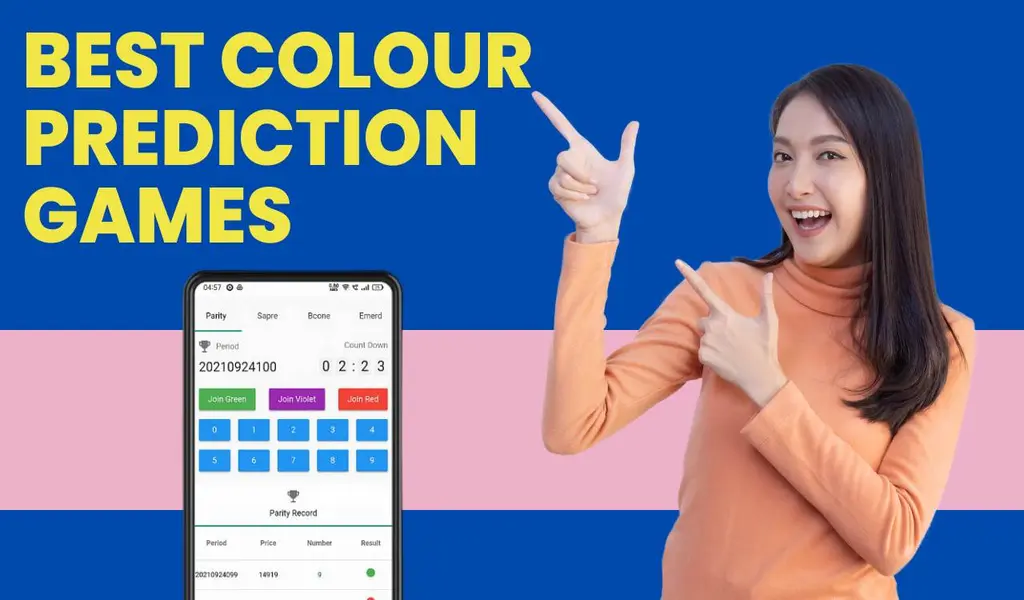Gaming
The Art and Science of Designing Engaging Color Prediction Games

Color prediction games have become a phenomenon in online entertainment, captivating audiences with simplicity and unpredictability. Behind the vibrant visuals and thrilling anticipation lies a delicate fusion of art and science that game developers must master to create engaging and immersive experiences. This article delves into the intricacies of designing color prediction games, exploring the symbiotic relationship between artistic creativity and scientific precision.
Visual Appeal and Aesthetic Design:
The first impression of any game is visual, and color prediction games are no exception. Aesthetic design is pivotal in creating an engaging and visually appealing environment. Developers leverage color palettes, typography, and graphical elements to craft an interface that is not only intuitive but also evokes a sense of excitement. The visual appeal of a game sets the stage for the overall user experience.
Psychology of Color:
Understanding the psychology of color is a fundamental aspect of designing engaging games. Each color evokes specific emotions and moods, influencing player perception and experience. Red may convey urgency and excitement, while blue induces a sense of calm. Thoughtful selection and integration of colors into the game’s design can enhance the emotional resonance, creating a more immersive and enjoyable experience for players.
User Interface (UI) and User Experience (UX) Design:
The user interface (UI) and user experience (UX) design are critical components that bridge the gap between players and the game. The UI’s layout, responsiveness, and intuitiveness impact how players interact with the game. A well-crafted UX ensures players can navigate seamlessly, make predictions effortlessly, and experience the game with minimal friction. The art lies in creating a visually appealing and functionally effective interface.
Gamification Elements:
The art of designing engaging color prediction games involves incorporating gamification elements. Points, levels, achievements, and other rewards contribute to a sense of progression and accomplishment. These elements tap into the psychological principles that drive motivation, encouraging players to continue predicting colors and enhancing the overall enjoyment of the gaming experience.
Dynamic Visuals and Animation:
The science of engaging game design includes dynamic visuals and animations to heighten excitement. Smooth transitions, visually stimulating effects, and responsive animations create a more immersive and dynamic experience. The strategic use of motion and visual effects enhances the sense of anticipation, making each prediction a visually captivating event.
Random Number Generators (RNGs) and Algorithmic Precision:
Beneath the artistic veneer, the science of color prediction games is governed by precision and algorithms. Random Number Generators (RNGs) drive the unpredictability of outcomes, ensuring fairness and unbiased results. The careful calibration of algorithms involves balancing randomness with the need for a structured and enjoyable gaming experience. The science lies in creating a transparent and mathematically sound system.
Adaptive Game play and Player Engagement:
Engaging color prediction games adapt to player behavior, creating a personalized and dynamic experience. The integration of adaptive game play elements allows the game to respond to individual preferences, learning from player interactions. The science here involves data analysis and algorithms that enable the game to evolve, maintaining player interest and engagement over time.
Responsibility and Ethical Design:
The art and science of designing engaging color prediction games come with a responsibility to consider ethical design practices. Responsible gaming features, clear communication of rules, and measures to prevent potential addiction contribute to a positive player experience. Ethical design ensures that the game remains a source of entertainment without compromising players’ well-being.
Community Building and Social Features:
The art of designing engaging color prediction games extends beyond individual game play to community building. Social features such as leader boards, challenges, and sharing predictions foster community. The science lies in designing features that enhance social interaction, creating a shared experience that extends the longevity and appeal of the game.
Conclusion:
Creating engaging color prediction games like 91 club register is a harmonious blend of artistic creativity and scientific precision. The visual aesthetics, psychology of color, UI/UX design, gamification elements, and dynamic visuals contribute to the artistry of the game. Simultaneously, the science of algorithms, RNGs, adaptive game play, and ethical considerations form the backbone that ensures fairness, transparency, and a responsible gaming environment. The synergy between art and science in designing color prediction games represents the evolving landscape of online entertainment, where creativity and technology converge to deliver captivating and enjoyable experiences.
SEE ALSO: The Top 10 Unblocked Games Premium of (2024) Get Your Game On





























